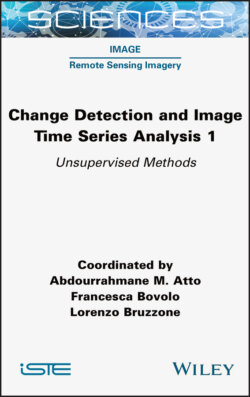Читать книгу Change Detection and Image Time-Series Analysis 1 - Группа авторов - Страница 26
1.4. Dataset description and experimental setup 1.4.1. Dataset description
ОглавлениеThe first dataset is a pair of QuickBird images acquired over an urban area in Xuzhou city, Jiangsu province (China) in September 2004 (X1) and May 2005 (X2), respectively. The Gram–Schmidt (G-S) pan-sharpening algorithm was applied to fuse the multispectral (2.4 m) and panchromatic images (0.6 m), in order to generate the final fused dataset (0.6 m) with four spectral bands (i.e. red, green, blue and near infrared). Images were radiometrically corrected and co-registered (with residual misregistration of about 0.3 pixels), and the final region with a size of 760×370 pixels was extracted for the CD experiment. A total of six change classes are presented in this scenario. Detailed class transitions are: 1) soil to built-up area (C1); 2) soil to roof (face to the sun) (C2); 3) soil to roof (back to the sun) (C3); 4) built-up area to soil (C4); 5) shadow to soil (C5); 6) trees to soil (C6). The false color composite images X1 and X2 are shown in Figure 1.6 (a) and (b), respectively, and Figure 1.6 (c) presents the change reference map made by careful image interpretation.
Figure 1.5. Illustration of the decision-level fusion-based binary CD step. For a color version of this figure, see www.iste.co.uk/atto/change1.zip
Figure 1.6. Color-infrared composite of bitemporal QuickBird pan-sharpened images (bands 4, 3, 2) over an urban area in Xuzhou city, acquired in (a) 2004 (X1) and (b) 2005 (X2). (c) Change reference map. For a color version of this figure, see www.iste.co.uk/atto/change1.zip
Figure 1.7. False color composite of QuickBird images of the Indonesia tsunami dataset acquired in: (a) April 2004 (before tsunami), (b) January 2005 (after tsunami); (c) and (d) are two subsets selected from the whole scene in the qualitative experimental analysis. (e) Change reference samples. For a color version of this figure, see www.iste.co.uk/atto/change1.zip
The second dataset is made up of a pair of co-registered QuickBird multispectral images with a spatial resolution of 2.4 m, acquired over a large coastal area in Indonesia in April 2004 and January 2005, respectively (see the two times of the false color composite images shown in Figure 1.7(a) and (b), respectively). The whole study area considered has a size of 3,250×4,350 pixels. Two subsets were selected for detailed qualitative analysis, as shown in Figure 1.7(c) and (d). A change reference sample map was made by careful image interpretation (Figure 1.7(e)). The changes that occurred in this scene were mainly caused by the tsunami in December 2004, which include the following classes: (1) vegetation to flooded district (C1); (2) forest to flooded district (C2); (3) shadow to vegetation (C3); (4) shadow to forest (C4); (5) bareland to flooded district (C5); (6) cloud to forest (C6); (7) forest to shadow (C7).
